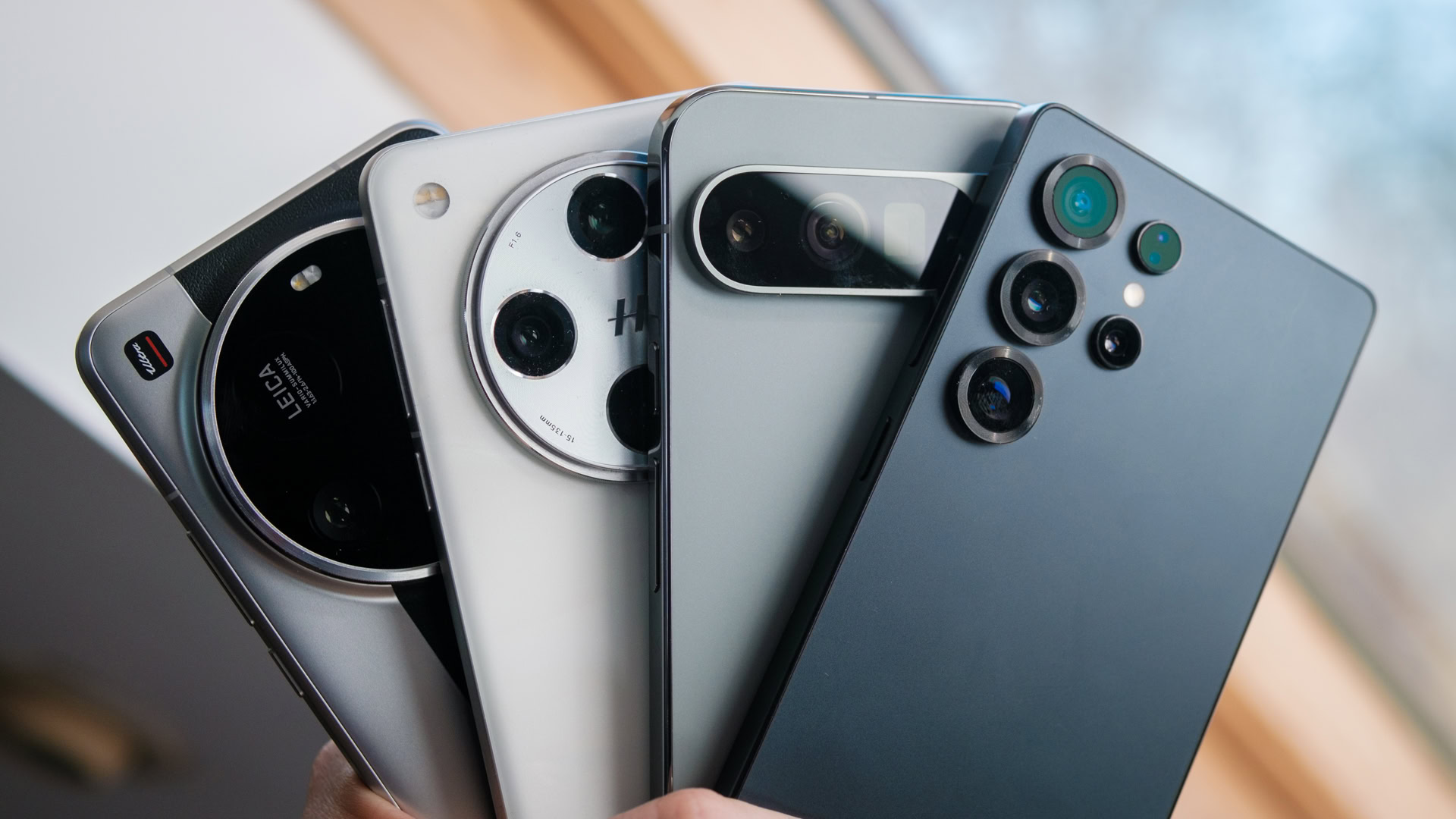I’d been looking forward to testing HP’s new EliteBook X G1a, one of the first enterprise-class laptops based on AMD’s Ryzen AI 300 (Strix Point) chips. It was worth the wait.
The EliteBook X G1a is a fine laptop with some handy HP AI features. In my tests, the machine did well on AI-specific tasks and many multi-threaded tasks, but came up a bit short on others. Namely, it didn’t have quite the battery life or the performance in longer tests that I’ve seen from some recent machines based on Intel’s Core Ultra 200V (Lunar Lake) series. (Earlier, I got similar results on HP’s OmniBook Ultra 14, a high-end consumer PC based on the same chip family.
(Credit: HP)
Starting with the basics, the EliteBook X G1a just looks great. It has the same “Glacier Silver” color—a lighter shade than the OmniBook and most other Windows laptops—that HP started using in last year’s EliteBook line, including the Elite x360 1040 G11 I tested last year. The 14-inch EliteBook X G1a measures 12.29 by 8.45 by 0.035 to 0.52 inches, and my model came in at 3.27 pounds (4.14 pounds with the included 100-watt charger). That makes it a bit heavier than most of the executive notebooks I’ve seen in recent months.
Under the lid, the EliteBook X G1a has a 1,920-by-1,200 display with 400 nits of brightness, pretty standard these days, but still quite nice. HP also offers the laptop with a 2,880-by-1,800 OLED touch display with 120Hz VRR, which would probably deliver even better visuals—but with a corresponding hit to battery life. I would prefer if HP offered a touch option for the FHD display, but I understand not wanting too many choices. As usual on such machines, the EliteBook X G1a’s bezels are pretty minimal, but the top is big enough to hold the 5-megapixel camera.

(Credit: HP)
Along the edges of the laptop, you’ll find a fine layout of ports. The left side has an HDMI port, a 40Gbps Thunderbolt 4/USB-C port, and a 10Gbps one, plus an audio jack. On the right, the machine offers another 40Gbps Thunderbolt/USB-C, a 10Gbps USB-A 3.2, and a locking slot. I like that the machine features both USB-A and HDMI while providing USB-C on both sides, which makes plugging in the charger more convenient. The EliteBook X G1a has Wi-Fi 7 and Bluetooth 4.5, but no 5G modem option.
The EliteBook X G1a has a good keyboard, too, providing a nice backlit setup with 1.5mm of travel and handy indicator lights on the mute function keys, in addition to a large touchpad with multi-click support.

(Credit: HP)
The audio and video hardware also turned in solid performance. The 5-megapixel camera was a bit darker than others I’ve tested lately for video and audio conferencing, but it was sharp, with the widest field of view I’ve seen. And, of course, it supports Windows security features that worked quite well for me, such as locking when you step away and waking on approach if you’ve set up Windows Hello. The top of the display also has a physical switch to cover the webcam. It has four speakers and two microphones that came through with very good sound quality.
The EliteBook X G1a enhances video conferencing with HP’s Poly Camera Pro software, which offers an array of features, including different levels of blur and the ability to easily create backgrounds and watermarks. Microsoft Windows Studio Pro, which is included with all of the Copilot+ PCs, does some of this, but it only works with laptops’ internal cameras. Poly Camera Pro does more and works with both internal and additional external cameras. It’s a nice addition.
As for the nuts and bolts, the EliteBook X G1a I tested featured an AMD Ryzen AI 9 HX Pro 375, which is a 12-core/24-thread processor with a TDP of 28 watts; AMD’s Radeon 890 graphics; and a neural processor rated at 55 trillion AI operations per second (TOPS), higher throughput than the NPU on competing Intel Lunar Lake chips. As a Pro model, it supports AMD’s manageability features, similar to Intel’s vPro. This model was outfitted with 32GB of memory and a 1TB SSD.
That hardware delivered sturdy performance: typically a little better than Lunar Lake systems on regular CPU benchmarks, particularly those that use multiple threads, but slightly lagging behind the Intel systems on graphics.
Putting the EliteBook X G1a to the Test
On my toughest tests, the EliteBook X G1a took 41 minutes to transcode a video with Handbrake. That’s one of the best times I’ve seen; comparable with what I saw on the Lunar Lake-based ThinkPad X1 Carbon Gen 13, and better than the hour and 19 minutes on the Meteor Lake-based Elite x360 1040.
The EliteBook X G1a ran a portfolio simulation in MatLab in about 36 minutes, better than I’ve seen with Qualcomm Snapdragon-based machines, but not nearly as fast as the 24 or 25 minutes I saw with the Lunar Lake-based X1 Carbon and Dell Pro 14 Premium.
Get Our Best Stories!

Your Daily Dose of Our Top Tech News
By clicking Sign Me Up, you confirm you are 16+ and agree to our Terms of Use and Privacy Policy.
Thanks for signing up!
Your subscription has been confirmed. Keep an eye on your inbox!
It took 41 minutes to run a complex data table model in Excel; that’s notably better than the Qualcomm-based machines but not as fast as the 34 minutes I got on the X1 Carbon and the 38 on the Dell Pro 14 Premium.
On AI applications, the 55 TOPS NPU did seem to make a difference in a number of local applications. I didn’t see much difference with a local version of Stable Diffusion (through Automatic), but running Llama 3.2 (through LM Studio), I saw a performance of over 13 tokens per second versus around seven on the Lunar Lake systems.
The AMD system handily outscored the Lunar Lake ones on UL’s Procyon AI Inference test, and even edged out the Snapdragon-based systems I’ve tried out. I’m not sure lots of people care about local AI performance yet—outside of things like video-conferencing screen effects—but it is a clear advantage for the AMD processors.
Then there’s the battery: a rather large 74.5 watt-hour unit. On PC Mark 10’s Modern Office battery test, it lasted 18 hours and 46 minutes with the screen set to 40 nits, and 18 hours and 22 minutes with it set to 100 nits—excellent times, though nowhere near the 30+ hour battery life I saw on the Dell Pro 14. Still, the EliteBook X G1a’s battery seemed to last more than long enough for me to get through a normal day’s work without worrying about it.
Recommended by Our Editors
And the machine does all of its work very quietly. HP has been pushing the laptop’s low noise level, and indeed I rarely noticed sound from the fans.
Finally, there’s the AI. The EliteBook X G1a contains all the basic features of Copilot+ PCs, including the Windows Copilot itself (with a dedicated key for bringing it up), Windows Studio Effects, Windows Paint with Image Creator, and Live Captions. The laptop should also get other features, such as Recall and Click-to-Do, as they are released.
HP has its own AI tools, including Poly Camera Pro, plus its HP AI Companion helper, which is still listed as Beta software. AI Companion, which is based on ChatGPT, works by processing in the cloud, though HP says the data is only saved on the local machine and never used for training.
HP AI Companion delivers three flavors of help: Discover, Analyze, and Perform. Discover lets you ask questions and do most of the basic things people think of with AI assistants, and it features some suggestions for things to do with AI. With Analyze, you can set up document libraries with PDF, text, or Word files totaling up to 100MB and then ask questions of those documents. Finally, Perform lets you control things like your laptop’s brightness or volume (although I don’t know why you wouldn’t just hit the appropriate function keys). It also includes an assistant that downloads appropriate drivers and the like.
In addition, there’s the now-traditional myHP app, which gives you, among other things, the ability to check battery health; turn on the Smart Sense features, which keep the machine running cool and quiet (versus the Performance option); and control the functions of the programmable key. In addition, HP includes a number of special applications, including its Wolf Security suite.
As I write this, a unit with similar features to the one I tested (with the Ryzen AI 9 Pro 375, FHD display, 32GB, and 1TB RAM) is selling for $2,199 on HP’s website. The lowest configuration with a Ryzen AI 7 Pro 360, 16GB, and 512GB SSD is selling for $2,099. This makes it a pricey, high-end laptop, though of course most buyers would be looking to buy in bulk and get discounts.
For those prices, you’re getting a solid, well-built machine with very good performance overall—especially on local AI models—and some extras, even if it’s a bit heavier than others I’ve seen.
About Michael J. Miller
Former Editor in Chief










